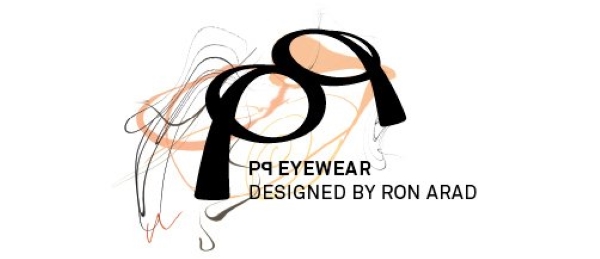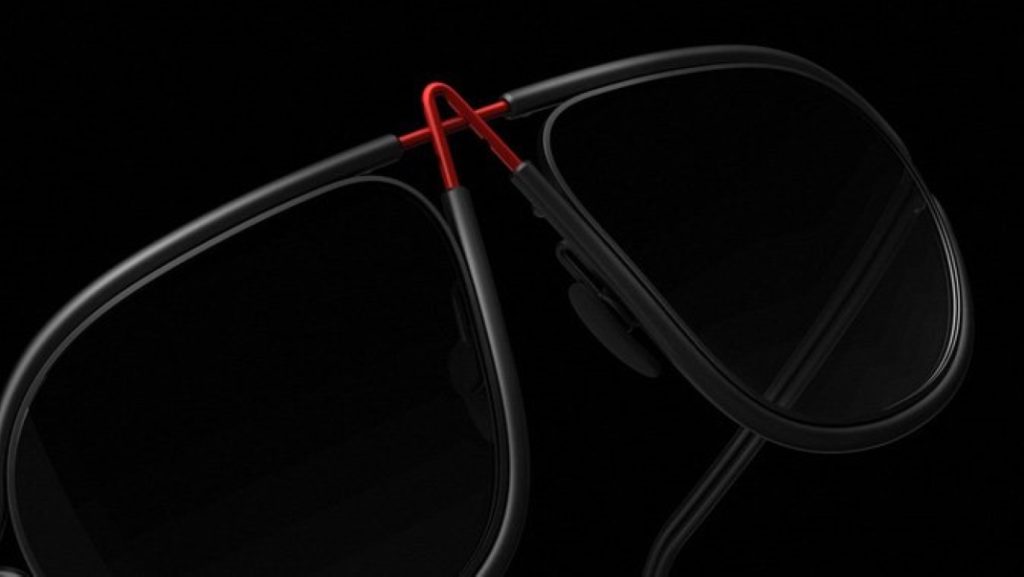Ron Arad opens his lecture at Holon Fashion Week 2011 with a smile and a joke. Then he begins relating the story of his pq eyewear project, from the very first email.
Ron Arad opens his lecture at Holon Fashion Week 2011 with a question: “Does anyone have any questions?” Once the audience’s laughter dies down, he begins relating the story of his pq eyewear project, from the very first email. pq eyewear began with an email Arad received one day from Assaf Raviv suggesting that he design eyeglasses. Arad tells the audience that at first he simply ignored Raviv’s email. A week later he received another email, which he also ignored. Thus for several weeks Raviv sent emails and Arad ignored them. Until one day, Arad responded courteously but not enthusiastically, and concluded with “we’ll talk later”. Raviv took it literally and started calling Arad’s offices. Week after week, time after time, for several weeks, usually receiving no response. After a while, Arad recounts, Raviv’s persistence paid off, his curiosity was piqued, and pq eyewear came into being.

After this introduction, Ron Arad continues to recount that at first he didn’t understand why Raviv had approached him. What have eyeglasses got to do with him? A quick review of Arad’s work, from the flexible Bookworm bookshelf, through the Voido rocking chair and Ripple chair, and even Design Museum Holon with its sinuous ribbon façade, leads to the obvious conclusion that designing eyeglasses has always been hidden in the genetics of his designs, rooted in his design handwriting. One can discern “eyeglasses” in his chairs, sculptures, buildings, and even his shelves.
Arad continues to talk about building the pq brand, which came about while working on the design of the glasses themselves. The pq brand was a significant part of the creative thinking and working toward a complete product.Numerous suggestions for a brand name were raised in the course of working on the glasses, for example gafas (the shape of the letter “g” reminded Arad of glasses, and the meaning of the word in Spanish is “glasses”), and Jam Jars (“Coke bottle glasses” as they used to be called). He presents this word-pair on a sheet of paper filled with sketches of the letter “J”, which suddenly looks like the temple of a pair of glasses, and with the dot above the letter (j) creates eyeglasses. After much deliberation and thought, the name pq was finally chosen. The two are consecutive letters of the alphabet, and when written one after another create the shape of eyeglasses. Design of the logo began with writing the letters hundreds of times, from right to left, from left to right, one above/below the other, and every other way imaginable. For the first time in his studio’s history, says Arad, they used the services of a graphic designer. The final decision and logo design lean on maintaining the flow of handwriting, as well as simplicity and modernity, and an allusion to the clear form of eyeglasses as they are today. Thus, even before the designs for the eyeglasses were completed, they already had a logo, a poster, and a brand, says Arad.

The glasses in the series underwent numerous experiments and different designs. Behind the name of each pair of glasses there is creative, different, and refreshing thinking about the form, function, and meaning of each and every stage of their planning and production.In the design of the Frida glasses (named after Frida Kahlo) the left temple extends from the right lens and the right temple from the left lens. The result is a new line that is unfamiliar to the eye, reminiscent of the renowned painter’s monobrow.All the designs feature adjustable hinges, temples, and lenses. Almost nothing is fixed, everything moves. Everything becomes a playful game. Everything becomes personal.When Arad talks about the materials used in the design of the glasses, he explains that they lean on materials research from previous projects. They experimented with materials they’ve worked with in the past, such as silicone. He presents a slide of a round, John Lennon-style frame made of silicone into which they set elliptical lenses. The shape of the silicone frame changes in accordance with the lens that in effect creates the shape of all the glasses.

Arad then presents a pair of glasses they fondly refer to as Corbs, short for Le Corbusier, “because every architect wants to have glasses like his”, he explains. The glasses are made of two layers incorporating interplay between two different materials, one hard and the other soft. The slot of the hard material is filled by stainless steel, which they used in the design of Two Nuns Bike for the Elton John AIDS Foundation and which attracted a great deal of attention on the Internet.
Two Nuns Bike
Some of the research carried out by the studio focused on the classic structure of glasses. They paid special attention to the structure of the temples and discovered that there is an age-old technique to attain flexibility of the temples. In the past this technique was used to design the bends that fit around the ear. They decided to use this technology and move the flexible connector from the hidden part behind the ear to center stage. They created the A-Frame series, with the A connecting the two lenses made of flexible wire that can be bent and widened and changed in accordance with the wearer’s face.

Part of the design also includes a dedicated case. Arad’s studio tried to find shapes and solutions, going from elliptical to amorphous shapes and back to round shapes, and eventually arrived at a practical and convenient solution. The case is cylindrical and opens on the side, obliging the user to put the glasses into and take them out of the case from one of the sides. A ring of delicate and extremely dense brush fibers is fixed into the middle of the case, and prevents the glasses from moving inside the case. The fibers also have an additional function – they clean the lenses every time they are put into or taken out of the case.

Ron Arad and his team completed the design of the pq eyewear brand by designing the space in which the eyeglasses and display stands will be presented. The brand, which will be presented at innumerable fashion, accessories, and eyewear exhibitions, has its own designed space. It has been designed in the spirit of the brand, with maximal exploitation of the knowledge accumulated during work on the Roundhouse project. This space, too, is encircled by a curtain made of silicone rods that envelops the people trying on glasses, spectators, and visitors, isolates them from the exterior environment, and detaches them from everyday life in a bubble that is all innovation, creativity, and well-filtered sunlight.



